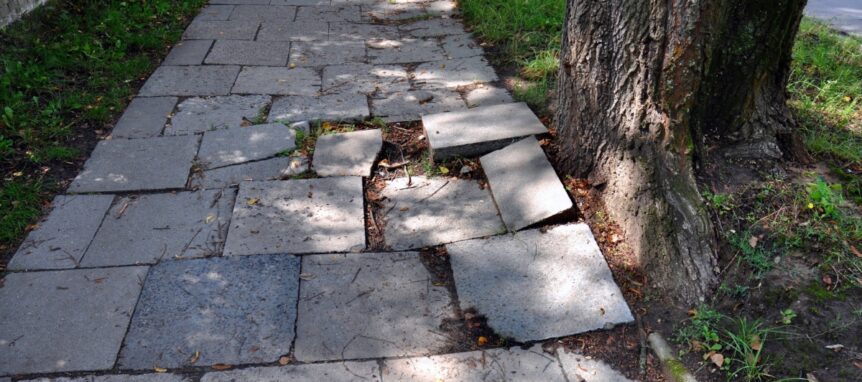Homeowners often focus on protecting their property from obvious threats like water infiltration or weathering, but one hidden culprit often goes overlooked—landscaping. Trees, shrubs, and even beautiful garden beds can pose a serious risk to your masonry structures. Over time, roots and poor landscape placement can compromise foundations, damage walkways, and cause brickwork to shift or crack. While trees enhance curb appeal and provide shade, their roots don’t respect property lines—and certainly not mortar joints.
Understanding how your landscaping choices can impact the integrity of your masonry is key to preserving the long-term durability of your home or building.
The Silent Strength of Tree Roots
Tree roots are incredibly strong and persistent. While they grow primarily to seek out water and nutrients, they will often follow paths of least resistance—such as cracks in sidewalks, gaps in foundations, or loose soil around retaining walls. This exploratory nature allows them to squeeze into even the smallest spaces, where they slowly expand and exert pressure over time.
Once roots take hold beneath or beside a masonry structure, they can push bricks out of alignment or lift entire slabs. This pressure doesn’t need to be sudden or forceful to cause damage. In fact, most of the harm caused by roots is gradual and subtle until cracks, gaps, or uneven settling start to appear.
Foundations at Risk
The foundation of your home or building is particularly vulnerable to invasive roots. As tree roots grow and displace the surrounding soil, they can cause the foundation to shift unevenly—known as differential settlement. This gradual movement places stress on the structure above, often leading to cracking or bowing in brick walls, separation between bricks or stone, and gaps around windows or doors. These structural shifts might start small, but if left unaddressed, they can compromise the overall stability of your masonry and escalate into far more extensive and costly repairs.
Landscape Drainage and Moisture Concerns
Another landscaping-related issue that affects masonry is poor water drainage. The roots themselves aren’t the only problem—how water is absorbed, retained, or drained around plant beds and trees also plays a huge role. Overwatering your garden or planting in areas that don’t drain properly can lead to pooling water near your masonry walls or foundations. This moisture buildup seeps into mortar joints and brickwork, accelerating erosion, efflorescence, and even freeze-thaw damage in colder climates.
Mulch piled too high against brick walls or raised beds built without proper barriers can trap moisture as well. These practices may seem minor but can create long-term headaches for masonry if left unaddressed.
Hardscaping Hazards
Even decorative landscaping elements like flagstone paths, stone borders, and retaining walls can create problems if not installed properly. Improper grading or poor joint spacing may channel water toward masonry instead of away from it. Pavers that are too close to a brick wall or set on unstable ground can shift and crack—adding pressure to the nearby masonry or creating a tripping hazard.
Over time, decorative stone edging or planters may settle and lean into surrounding structures. These added loads can accelerate cracking in adjoining brickwork or stress the mortar joints, particularly if the original build didn’t account for this weight.
Keeping Roots and Masonry in Harmony
Fortunately, with some planning and maintenance, you can enjoy lush landscaping and durable masonry without one damaging the other. Choose tree species with smaller root systems when planting near masonry structures, and keep large trees at a safe distance. Regularly inspect your property for early signs of root intrusion, such as cracking pavement or small gaps near the foundation.
If you’re unsure about the impact of your current landscaping, consulting with a qualified arborist or masonry professional can help you assess the risks and plan a proactive strategy.
Building a Balanced Environment
Landscaping should enhance your property, not compromise it. While trees and gardens bring beauty and value, they need to be balanced with the structural integrity of your masonry. Early intervention is always better than reactive repairs. Monitor both visible and subtle changes to your masonry, especially near planted areas, and make sure drainage and root paths are well-managed.
Safeguarding Your Masonry Investment
If you’ve noticed cracks, settling, or other signs of stress in your masonry that may be related to landscaping, it’s time to act. Turnbull Masonry brings decades of experience in diagnosing and repairing brick, stone, and concrete damage caused by tree roots, drainage issues, and other landscaping challenges. To speak with a professional and schedule an assessment, contact Turnbull Masonry. Protect your home by taking the first step toward long-term masonry health.

